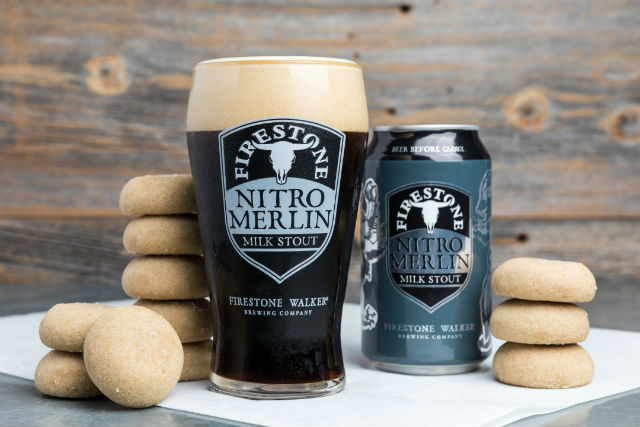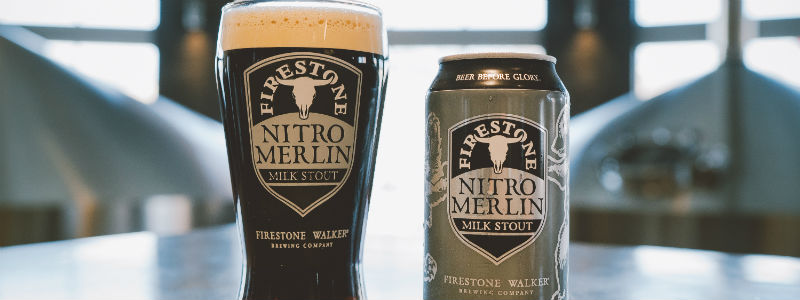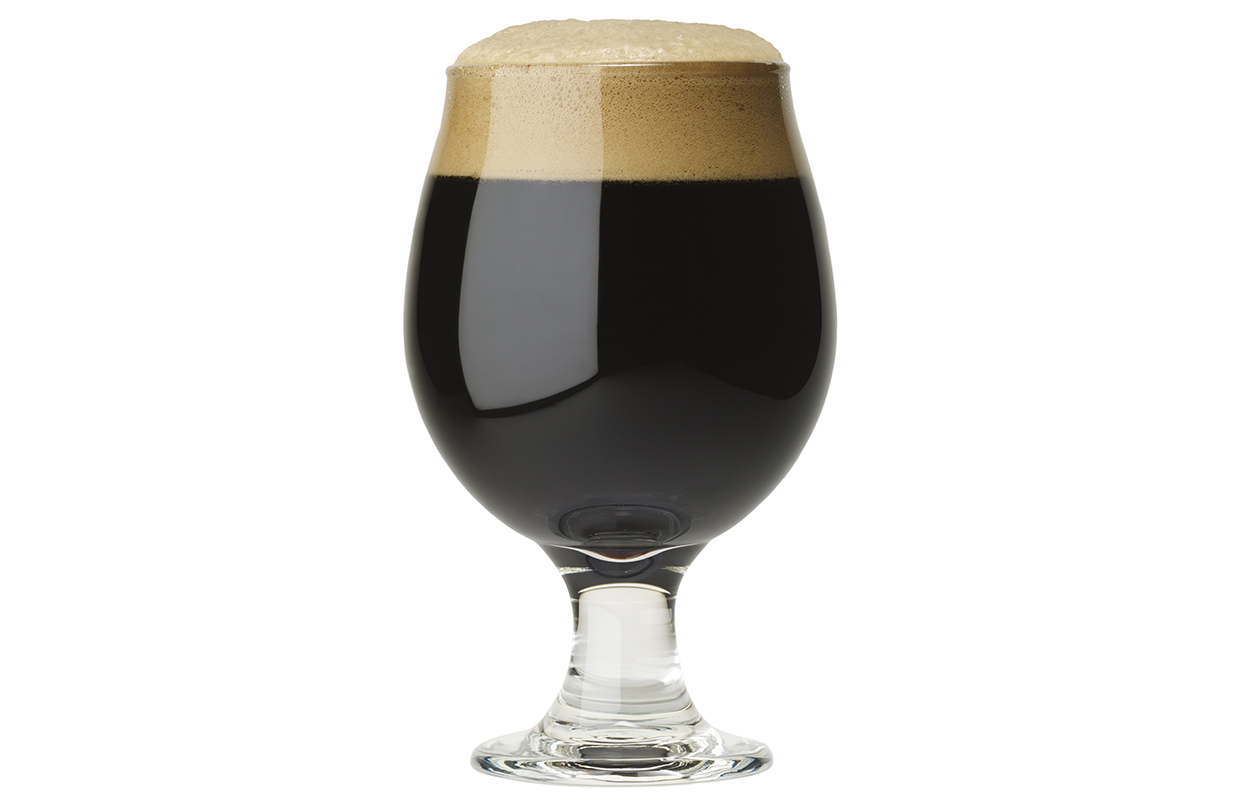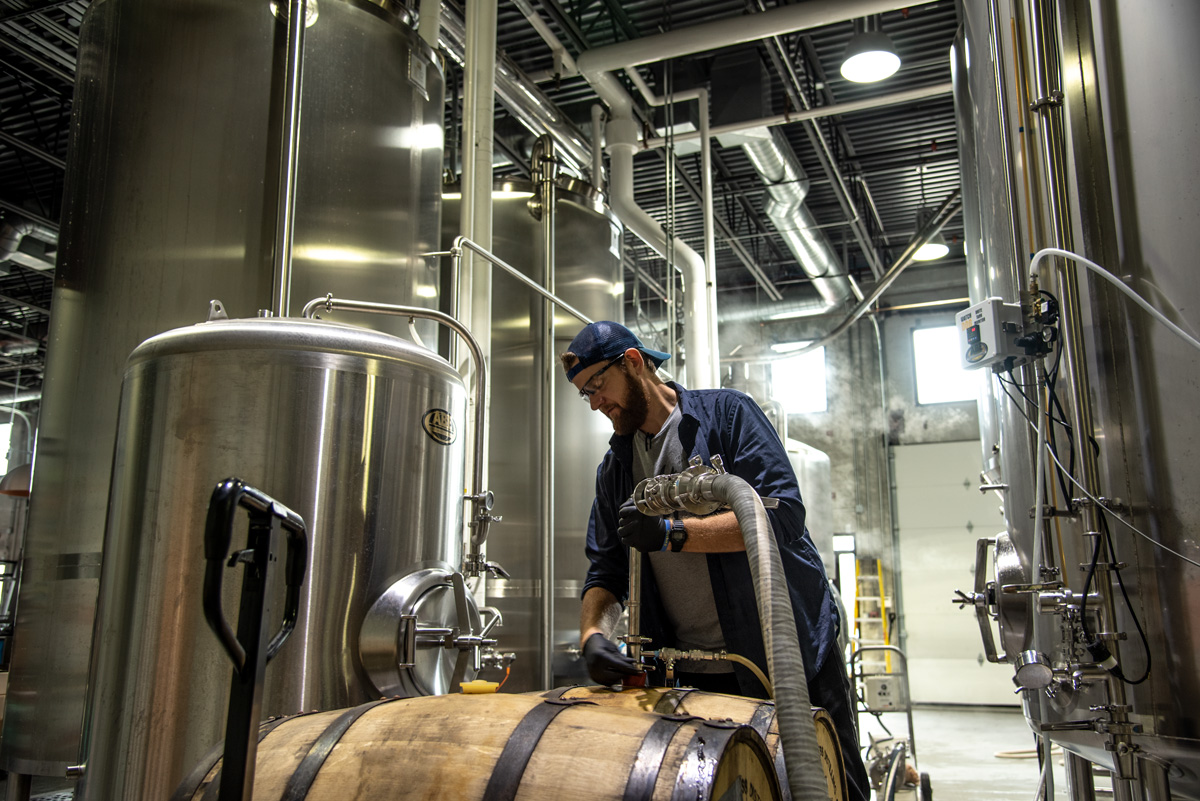
Matt Brynildson said he’s always been fascinated by nitro beers, even back to the mid 90s working for Goose Island.
“I spent a lot of time studying it back then and always been a fan of Guinness and more focused on the genius of that whole nitrogenated draft and packaged products,” said the Masterbrewer at Firestone Walker. “We always dreamed of having something in our portfolio and we’ve had Stouts on our lineup for a while with Merlin and Merkin and I always thought those beers tasted best on draft as a nitro product.”
So the Firestone Walker staff got to talking after adding a can machine with what they might be able to do.
It ended with the release of Nitro Merlin Milk Stout, that the company started to promote in January. It came with a fun video for consumers to learn to invert the cans three times and surge pour the beer the beer into the glass because the brewery decided not to include a widget at the bottom of the cans for various reasons.
“There are other folks doing it without a widget,” he noted, saying that Firestone Walker took inspiration from the cold brewed nitro coffee industry along with other west coast breweries like Modern Times and Garage Project. “It’ll be interesting to see how that all progresses if brewers catch the wave, and which direction they decide to go.
“It’s a little more involved in the packaging side with the widget, obviously you’ve got to either get that thing in the package or buy a can with that already glued in, and you’ve got to figure out how to purge the air out of that widget and pressurize and all those kinds of things make it a little more complicated.”
The beer is delivered to the can with nitrogen already infused into the solution and then they top the can off so that it will be pressurized before sealing.
“It was a little daunting at first,” Brynildson said. “We had some deadlines and you’re doing a lot of testing and we were having a little bit of difficulty just with consistency and then we figured a couple of things out that really perfected it and allowed us to really monitor the process.”
Adding new downstream monitoring equipment helped immensely.
“Obviously it’s an opaque package, so once you get the beer and the nitro and everything in there you can’t really see what’s going on,” he said. “We’ve always been very quality focused so we’re looking really closely at finished pressure, finished nitrogen, finished CO2, and finished oxygen in the package.”
It also means some work on Firestone’s marketing department to help educate the masses that this isn’t a crack and pour product.
“I’m a firm believer that craft beer is fun and needs to be fun and the folks who get the most out of it are engaged in paying attention,” Brynildson said. “I think you still get a solid beer even if you crack the can and drink it or or poured into a glass without inverting it.
“I don’t know what percent, but there’s going to be a certain percentage of people who are just not going to take the time and are going to treat it like any other beer. Our hope is we’ve created something that can be a good experience either way but I do think it’s fun and if people catch on to it and kind of get into it , it is a lot of fun to poor and watch and enjoy. And it is a different experience than your normal carbonated products. So I that’s pretty cool.”
Brynildson said his team researched widgets pretty seriously and decided in the end that they weren’t confident in the process.
“Stouts are pretty robust so when you start talking about dissolved oxygen and total package oxygens and when you’re in the finished package they probably can stand up a little tougher than say an IPA or something like that but we still are a little nervous,” he said. “All of our research kind of showed that widget products were subject to a much higher TPOs and we weren’t really comfortable with that so we started focusing on how we could do without the widget.
“But what’s amazing is with or without that hard pour you still end up with a really nice finished product. The added cost and waste of the widget for you only in some ways just seemed unnecessary to us.”






Be the first to comment